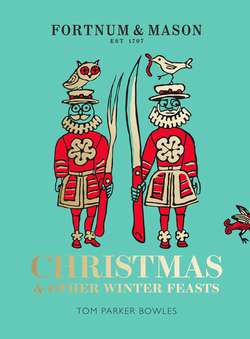Читать книгу Fortnum & Mason: Christmas & Other Winter Feasts - Tom Bowles Parker - Страница 30
The Shoot Lunch
ОглавлениеWe need to talk about pheasant. And grouse, partridge and snipe. Oh, and rabbit, hare and venison, too. Game, the furred and feathered stars of British seasonal food, the true nobles of our national larder, the envy of serious eaters across the globe. Low in fat, high in flavour, sustainable, and relatively cheap too. What’s not to adore?
Well, everything, according to the vast majority of Brits. Too visceral, they cry, and ‘difficult’, before blithely retreating to the bland indignities of the cheap chicken breast. So much safer, and less … well, threatening. Like offal, game is seen as something at the more hardcore, debauched end of British food. An ingredient that is best left to the adventurous. And I suppose one can see their point. Our taste buds have become so dulled over the years that anything with even a modicum of meaty might is treated with suspicion. The Victorians had a taste for ‘high’ game, meaning they hung the carcasses until the maggots started to drop off. And the flavour, as you might imagine, was a touch testing.
But that first taste of young grouse just after the Glorious 12th of August is as close to subtle perfection as any food on earth. Simply roasted (and to do anything else at this time of year is tantamount to heresy), you get that sweet, succulent flesh, scented with the merest whisper of heather. It’s about as far removed from the stinking flesh of popular imagination as Helen of Troy is from Medusa.
Then there’s the discreet charm of the partridge. Sadly, the native grey leg is a rare beast these days, supplanted by the farmed red leg or ‘Frenchie’. My father is convinced that the grey is far superior, in eating terms, to the red, with a deeper flavour and rather more depth. He knows of what he speaks. But the red leg is a fine bird, either roasted with unsmoked bacon draped across its breast, or transformed into a partridge pepper fry, where that delicate flesh is piqued by exotic spices.
Admittedly, pheasant can veer towards the dry, especially towards the end of the season. But it makes a fine stew, and the breasts, if cut off, can be breaded and turned into gamey goujons. Or even cured, over salt, as ham. Woodcock, with its molten brown eyes and rapier-like beak, is the most beautiful of birds. And its flavour is certainly a little more pronounced than that of its cousins. Oh, and some may not approve of the way it’s traditionally presented, the beak tucked under the wing, the head split open to reveal a tiny spoonful of winsome brain. A treat indeed. But one, perhaps, for the more seasoned game aficionado.
Still, who could resist the charms of rabbit in a punchy mustard sauce, or venison fillet, lightly seared. Hare is a magnificent beast, with the flavour going from majestic to downright fierce. These are not ‘extreme’ foods, but rather ingredients to be worshipped and adored. And Fortnum’s has long done a roaring trade in game, and also all manner of game consommés and pies (not least, the glorious Christmas Pye), plus the relishes we Brits consume with such, um, relish.
‘Every bird we sell is hung to perfection,’ cries a piece in a 1930s’ catalogue. ‘In fact we have arranged with the Duke not to so much as fire at a bird unless it has been properly hung. That’s how Fortnum’s do things.’ They have been and remain masters of the game pie – ‘Perhaps the finest things we do,’ according to the same catalogue. Francis Law, in A Man at Arms: Memoirs of Two World Wars, writes of the food in his officers’ mess: ‘expensive and superlative. Most of it came from Fortnum & Mason. Delicious pâtés and ham … salmon and game in season … such bounty was never to be seen again’. They plucked game, and even had a department that supplied game to the gentlemen’s club of St James’s, right up until the late 1940s. Occasionally, the supply would go the other way around, with Fortnum’s buying the game sent to the club by their members, and transforming it into pies and terrines.
Fortnum’s also had a whole department devoted to shooting, selling their own shotguns, and cartridges too. Plus all manner of caps, waxed jackets, plus-fours and picnics. They also maintain a tradition of catering for the shooting lunch, that claret-soaked happy hiatus where the morning’s sport is discussed and debated, over rich venison stews, shepherd’s pie, steak and kidney pudding, or even local fish and chips. My aim is not particularly true, but in the winter months, there are few places I’d rather be than in some rugged field, be it Dorset, Devon or Durham, with good friends, awaiting the flutter of wings. Far from being some bloodthirsty slaughter for ruddy-faced toffs, proper shooting is as much about conservation as it is about killing. And it goes without saying that every single bird killed is gutted, plucked and sent to the dealer. To be trussed, and sold on to those who crave their winged wonders. So abandon squeamish preconceptions, and embrace game. Start with a taste of partridge, and before you know it, you’ll be craving civet à la royale, and lusting after that woodcock. Ditch the dullard chicken breast, and, to quote a famous advert for American fags, Come to Where the Flavour Is.
